Reading Bro. Robert Burns’ Masonic Farewell
It is never too much to remember Bro. Robert Burns. Here is one of his finest poetical pieces, the Farewell he wrote for his Brethren of St. James’s Lodge, Tarbolton, in 1786 when he intended to emigrate to Jamaica.
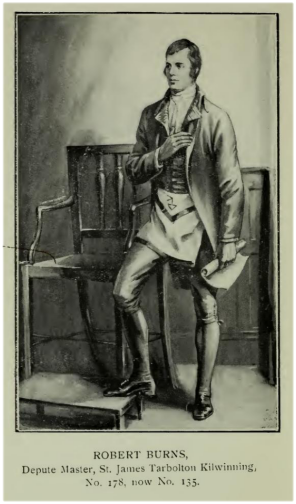
Image from ‘Robert Burns as a Freemason’, William Harvey, Dundee, 1921.
IMAGE LINKED: wikimedia Attribution 4.0 International (CC BY 4.0)
Although so many have done it, you can’t talk about Robert Burns without referring to Freemasonry. Deep in his heart, Burns was Bro. Burns, a true Freemason.
Not only because he was initiated in July, 1781, by the Lodge St. David, Tarbolton, being the future Deputy Master of the Lodge St. James Kilwinning, Tarbolton, and a respected visitor at so many lodges, praised and toasted; and the Poet Laureate of the Lodge Canongate Kilwinning, Edinburgh, a companion in the Holy Royal Arch Degree, and the Senior Warden of the Lodge St. Andrew, Dumfries.
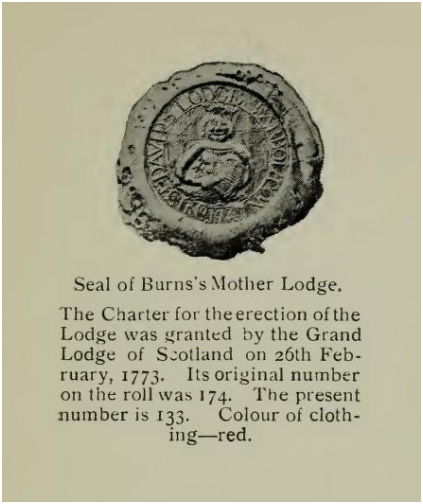
Image from ‘Robert Burns as a Freemason’, William Harvey, Dundee, 1921.
IMAGE LINKED: wikimedia Attribution 4.0 International (CC BY 4.0)
With all its diversity, most of his life was the fruit of a Masonic culture. Liberty, Equality, and Fraternity ran through his heart and poetry.
A passion for male friendship, free and straight talking, intellectual debate, that common field where enjoyment, love, and pleasure mix with freedom, harmony, and love. Freedom to praise his fellows of the Craft, but also to ridicule some of them, like the bleth’ran bitch Humphry, or Dr. Hornbook.
Even some of Burns’s controversial sides must be seen in this light. His New Licht religious elitism can be related to a masonic trait of the Sons of Light.
His A Man’s a Man for a’ that capacity to merge with patronage and nobility could be seen as a characteristic of the Scottish Freemasonry, where the poet and the painter could be seen side by side with the ruling classes without disturbing their power.
But freedom even to question these traits and Freemasonry itself and his own interest in it. For him, ‘Free’ was the most vital part of Freemasonry.
There is also plenty of evidence that Burns would not be Burns the Bard without the Freemasonry brotherhood.
They have changed the course of his life, provided the Kilmarnock edition of his first book, his Edinburgh reception, and the new edition, so many subscriptions to his books and poems, and many stops of his tours across Scotland.
They launched his career as Caledonia’s bard, but also as an exciseman when his farming collapsed.
The adult Burns was always surrounded by Brothers of the Mystic Tie. John Wilson, The Kilmarnock printer, was a Mason and so it was William Creech, the Edinburgh publisher, William Smellie, the printer and editor, and many others Crochallan Fencibles, the Edinburgh club founded by Smellie that admitted Burns.
Also Masons were Alexander Nasmyth, the artist, John Beugo, the engraver, Henry McKenzie, the literati reviewer, Dugald Stewart, the scholar, Captain Francis Grose, “Tam o’ Shanter” publisher, John Clerk (Lord Eldin), Henry Erskine, Gavin Hamilton, John Ballantine, Gavin Turnbull, James Dalrymple, James Cunningham the Earl of Glencairn, and so and so forth.
All of them were quite important in Burns’ life.

left: William Smellie, Master Printer and Editor, one of Burns’ associates and fellow Mason.
right: William Creech (1745-1815), Scottish publisher, printer, bookseller and politician.
Attributed to William Beechey – Bonhams,
IMAGE LINKED: wikimedia Attribution 4.0 International (CC BY 4.0)
The Farewell’s Year

Image from ‘Robert Burns as a Freemason’, William Harvey, Dundee, 1921.
IMAGE LINKED: wikimedia Attribution 4.0 International (CC BY 4.0)
Among Burns’ explicit or covered Masonic poems is “The Farewell. To the Brethren of St. James’s Lodge, Tarbolton”, a poem-song about something that luckily never happened.
The Bard was never far awa. After all, those same Brethren managed to avoid his emigration.
Written in 1786 and included in the Kilmarnock edition of his book Poems, Chiefly in the Scottish Dialect (1786, pp. 228-229), that poem-song was also included after the Poet’s death in The Scottish Musical Museum (1834, closing the Vol. VI, p. 620).
Both for a tune “particular favourite with Burns” (p. 511): Good night and joy be wi’ you a’, an Auld Lang Syne predecessor as a popular and “beautiful tune… played at the breaking up of convivial parties in Scotland” (p. 510).
1786 was probably the most critical year in Burns’ life. Living in disarray, his farm was going from bad to worse; he had “Betty”, a child from his maid Elizabeth Paton; his future wife Jean Armour was pregnant with twins who would be born in September; and another woman, Mary Campbell was also to become pregnant and would die in October.
In those terrible days, Burns was offered a position as a “book-keeper” (overseeing enslaved people in sugar cane fields) by Ayrshire landowner Dr. Patrick Douglas, whose family owned Ayr Mount near Port Antonio in Portland on the northeastern coast of Jamaica (Mullen, 2022).
So, his proposed departure to the West Indies, “with foreboding anguish, thro’ his soul”, captured much of his poetic creation and “farewell” was its greatest expression.
Burns’ letters are also full of this:
“… and now for a grand cure, the Ship is on her way home that is to take me out to Jamaica, and then, farewell dear old Scotland, and farewell dear, ungrateful Jean, for never, never will I see you more!” (to David Brice, 12th June, 1786)
“I am now fixed to go for the west Indies in October.” (to David Brice, 17th July, 1786)
“My hour is now come. – You and I will never meet in Britain more.” (to John Richmond, 30th July, 1786)
“Farewell Dr Friend! May Guid-luck hit you,
And ‘mang her favorites admit you!
If e’er Detraction shore to smit you,
May nane believe him!
And only deil that thinks to get you,
Good Lord deceive him!!!” (to John Kennedy, 10th August, 1786)
“It is perhaps the last mark of our friendship you can receive from me on this side of the Atlantic. – Farewell! May you be happy up to the wishes of parting Friendship!” (to Thomas Campbell, 19th August, 1786)
“The hurry of my preparation for going abroad, has hindered me from performing my promise so soon as I intended.” (to Mrs. Stewart of Stair, September, 1786)
Even the main intention of that same year’s edition of the first Burns book Poems, Chiefly in the Scottish Dialect was to fund his own passage to Jamaica.
Had he gone he would probably be “a victim to that inhospitable clime, and gone to the world of spirits” (letter to Dr. John Moore, 2nd August 1787) like most of the Scots who traveled to the Caribbean (Mullen, 2022).
In his book The Scottish Enlightenment, Arthur Herman tells us about what happened with the Gordon Highlanders regiment:
“The Gordon Highlanders reached Jamaica in June of 1819. Over the next six months, without a shot being fired, they lost ten officers, thirteen sergeants, eight drummers, and 254 other ranks.
This was more than all the men the regiment had lost in battle since its formation twenty-five years earlier.” (p. 333)
But for Burns, events took an unexpected turn. His book was a quick success and Burns could scrap his planned emigration.
However, “farewell” remained an important reference for the Poet. In that same year of 1786, he wrote six other ‘farewell’ poems:
“On a Scotch Bard Gone to the West Indies”,
“The Farewell”,
“Farewell to Eliza”,
“Farewell to the Banks of Ayr”,
“Lines to Mr. John Kennedy”,
“My Highland Lassie O”
The previous year he wrote “The Braes o’ Ballochmyle” and “Address to the Deil”, and during his life we can count at least sixteen explicit ‘farewell’ poems.

Title page from Poems, Chiefly in the Scottish Dialect, Kilmarnock, 1786.
IMAGE LINKED: wikimedia Attribution 4.0 International (CC BY 4.0)
The Poem
In The Scottish Musical Museum published by James Johnson, “The Farewell. To the Brethren of St. James’s Lodge, Tarbolton” comes with this note:
“Burns became a member of this lodge of Freemasons, after his family removed to the farm of Lochlea, in the parish of Tarbolton, Ayrshire. During this period (says his brother Gilbert,) he became a Freemason, which was his first introduction to the life of a boon companion”. (pp. 511-512)
There is no mention in the Lodge’s minutes (Higgins, 1893, p. 228), but the Poet is said to have chanted this Farewell at a Lodge’s meeting:
«Adieu! a heart-warm, fond adieu !
Dear brothers of the mystic tie!
Ye favored, enlighten’d Few,
Companions of my social joy !
Tho’ I to foreign lands must hie,
Pursuing Fortune’s slidd’ry ba’;
With melting heart, and brimful eye,
I’ll mind you still, tho’ far awa.
Oft have I met your social Band,
And spent the chearful, festive night ;
Oft, honour’d with supreme command,
Presided o’er the Sons of light:
And by that Hieroglyphic bright,
Which none but Craftsmen ever saw !
Strong Mem’ry on my heart shall write
Those happy scenes, when far awa !
May Freedom, Harmony, and Love
Unite you in the grand Design,
Beneath th’ Omniscient Eye above,
The glorious ARCHITECT Divine !
That you may keep th’ unerring line,
Still rising by the plummet’s law,
Till Order bright, completely shine,
Shall be my pray’r when far awa.
And YOU, farewell ! whose merits claim,
Justly that highest badge to wear !
Heav’n bless your honor’d, noble Name,
To MASONRY and SCOTIA dear !
A last request, permit me here,
When yearly ye assemble a’,
One round, I ask it with a tear,
To him, the Bard, that’s far awa.»
Four stanzas of eight strings with an iambic tetrameter meter.
The rhyme differs from stanza to stanza but returns always to the same sound (ababXXbX cdcddedX fgfggegX hihiiXiX; see KeyToPoetry.com analysis).
Everything was perfect for a song – like the natural sound of a heartbeat (let’s keep this topic!).
After a French touch (and that fond, so useful for another famous poem, ‘Ae Fond Kiss’) his heart (the word and the meaning most presented in the song) opens for a permanent traveling between the I and the Lodge, with his companions, symbols, and references.
Several antinomies appear as in the black and white floor of the lodges: the here and the far awa; the now and the memory; the joy and the sadness; Fortune’s slidd’ry ba’ (Shakespeare’s The Life of King Henry the Fifth) and Enlightenment (Burns)…
It is what Kant (1781) called the dynamic antinomies across the dialectics of existence – and across the dialectics of this song. Positive and negative meanings flow across it:
«Adieu! a heart-warm, fond adieu! –
Dear brothers of the mystic tie! +
Ye favored, enlighten’d Few, +
Companions of my social joy! +
Tho’ I to foreign lands must hie, –
Pursuing Fortune’s slidd’ry ba’; –
With melting heart, and brimful eye, –
I’ll mind you still, tho’ far awa. +/–
Oft have I met your social Band, +
And spent the chearful, festive night; +
Oft, honour’d with supreme command, +
Presided o’er the Sons of light: +
And by that Hieroglyphic bright, +
Which none but Craftsmen ever saw! +
Strong Mem’ry on my heart shall write +
Those happy scenes, when far awa! +/–
May Freedom, Harmony, and Love +
Unite you in the grand Design, +
Beneath th’ Omniscient Eye above, +
The glorious ARCHITECT Divine! +
That you may keep th’ unerring line, +
Still rising by the plummet’s law, +
Till Order bright, completely shine, +
Shall be my pray’r when far awa. +/–
And YOU, farewell! whose merits claim, –
Justly that highest badge to wear! +
Heav’n bless your honor’d, noble Name, +
To MASONRY and SCOTIA dear! +
A last request, permit me here, –
When yearly ye assemble a’, +
One round, I ask it with a tear, +/–
To him, the Bard, that’s far awa.» +/–
Like in Kant, only in a transcendental idealism we can solve the antinomies, admitting the existence of an intelligible causal power, or a necessary being that rescues reason from the conflict – The ARCHITECT.
The narrative structure of the song, like a masonic temple, intends to be perfect and meaningful.
The first stanza is the reason why for that Adieu. The second is the point of departure. The third is the main goal, the point of arrival.
And the last one ends in wishful thinking, a request – a transcendental idealism based mainly on masonic friendship and memory.
That this bunch of symbols and meanings end up touching the heart not only of the Freemasons but of those who left their land and their friends and families, that’s what is poetically amazing! ‘The Farewell’ – “for nearly a century that song has delighted English-speaking people in all climes and given life and spirit and pathos to their feasts” (a mason, Rob Morris, in The Voice of Masonry, a periodic edited from 1859; quoted by Grant, p. 119).
![]()
Not only a century –
but as long as Freedom,
Harmony, and
Love could exist.
Farewell to the Brethren of St. James Lodge at Tarbolton
Footnotes
References
Alker, Sharon, Davis, Leith, and Nelson, Holly Faith (eds.) (2012), Robert Burns and Transatlantic Culture. Farnham, Surrey, Ashgate.
Andrews, Corey E. (2021). “Caledonia’s Bard, Brother Burns”: Robert Burns and Scottish Freemasonry. In Mark C. Wallace, and Jane Rendall, (eds.) (2021). Association and Enlightenment: Scottish Clubs and Societies, 1700-1830. Lewisburg, PA, Bucknell University Press, pp. 143-160.
Burns, Robert (1786). Poems, Chiefly in the Scottish Dialect. Kilmarnock, John Wilson.
Carswell, Catherine (1930). Life of Robert Burns. London, Chatto & Windus.
Gibson, James (1872), Robert Burns and Masonry. The People’s Friend, Dundee, 20th November.
Grant, M. J. (2021). Auld Lang Syne: A Song and its Culture. Cambridge, Open Books Publishers.
Halliday, R. T. (1929). Burns and Freemasonry in Ayrshire. Burns Chronicle, Second Series, Vol. IV, pp. 137-145.
Harvey, William (1921). Robert Burns as a Freemason. Dundee, T. M. Sparks, Crosswell Printing Work.
Hecht, Hans (1936). Robert Burns, the Man and His Work. Translated by Jane Lymburn, Glasgow, W. Hodge.
Herman, Arthur (2001). The Scottish Enlightenment. The Scots Invention of the Modern World. London, Fourth Estate.
Higgins, J. C. (1893). Life of Robert Burns. Edinburgh, John Menzies & Co.
Johnson, James (ed.) (1834). The Scottish Musical Museum, Vol. VI. Edinburgh, William Blackwood and Sons.
Kant, Immanuel (1781). Critik der reinen Vernunft. Riga, Johann Friedrich Hartknoch. Used: Critique of Pure Reason, translated by Paul Guyer and Allen W. Wood, Cambridge, Cambridge University Press, 1998.
KeyToPoetry.com. (n.d.). The Farewell To The Brethren Of St. James’s Lodge, Tarbolton by Robert Burns: poem analysis. https://keytopoetry.com/robert-burns/analyses/the-farewell-to-the-brethren-of-st-james-s-lodge-tarbolton/ (accessed 14 November 2022).
Leask, N. (2010). Robert Burns and Pastoral: Poetry and Improvement in Late Eighteenth-Century Scotland. Oxford, Oxford University Press.
McLeod, Wallace, (1997). Robert Burns. In The Quest for Light: Selected Masonic Addresses, Melbourne, Australian and New Zealand Masonic Research Council, pp. 273-274.
Marshall, James (1846). A Winter with Robert Burns. Edinburgh, Peter Brown.
Mullen, S. (2022). The Glasgow Sugar Aristocracy: Scotland and Caribbean Slavery, 1775-1838. London, University of London Press, New Historical Perspectives.
Mulvey-Roberts, M. (1987). Burns and the masonic enlightenment. In Jennifer J. Carter, and Joan H. Pittock (eds), Aberdeen and the Enlightenment, Proceedings of a Conference Held at the University of Aberdeen, Aberdeen, Aberdeen University Press, pp. 331-338.
Roberts, Marie (1986). British Poets and Secret Societies. Totowa, NJ, Barnes & Noble Books.
Shakespeare, William (1890). The Life of King Henry the Fifth. London, MacMillan and Co.
Wright, Dudley (1921). Robert Burns and Freemasonry. Paisley, Alexander Gardner.
Wright, Dudley (1929). Robert Burns and His Masonic Circle. London, C. Palmer.
Article by: Carlos Oliveira Santos

Carlos Oliveira Santos, is a Portuguese university professor and the author of thirty books. His last book is about the Brazilian architect Oscar Niemeyer (www.niemeyerbook.com ).
Carlos is a Master Mason initiated into the Lodge Universalis (Grand Orient of Portugal) in 2012.
With a Ph.D. in Political Science, his main specialism is social marketing, and he received the Outstanding Achievement Award, conferred by the European Social Marketing Association, during the 2019 World Social Marketing Conference in Edinburgh. He is the publisher of Marketing Social Portugal – A social marketing space for the Portuguese-speaking world (www.marketingsocialportugal.net ).
He studied Burns at the Centre for Robert Burns Studies at The University of Glasgow.
Carlos is the president of The Cascais Burns Club, the first created in Portugal.
Recent Articles: in people series
 Celebrate the extraordinary legacy of The Marquis de La Fayette with C.F. William Maurer's insightful exploration of Lafayette's 1824-25 tour of America. Discover how this revered leader and Freemason was honored by a young nation eager to showcase its growth and pay tribute to a hero of the American Revolution. |
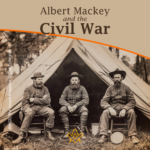 Albert Mackey and the Civil War In the midst of the Civil War's darkness, Dr. Albert G. Mackey, a devoted Freemason, shone a light of brotherhood and peace. Despite the nation's divide, Mackey tirelessly advocated for unity and compassion, embodying Freemasonry's highest ideals—fraternal love and mutual aid. His actions remind us that even in dire times, humanity's best qualities can prevail. |
 Discover the enduring bond of brotherhood at Lodge Dumfries Kilwinning No. 53, Scotland's oldest Masonic lodge with rich historical roots and cultural ties to poet Robert Burns. Experience rituals steeped in tradition, fostering unity and shared values, proving Freemasonry's timeless relevance in bridging cultural and global divides. Embrace the spirit of universal fraternity. |
 Discover the profound connections between John Ruskin's architectural philosophies and Freemasonry's symbolic principles. Delve into a world where craftsmanship, morality, and beauty intertwine, revealing timeless values that transcend individual ideas. Explore how these parallels enrich our understanding of cultural history, urging us to appreciate the deep impacts of architectural symbolism on society’s moral fabric. |
 Discover the incredible tale of the Taxil Hoax: a stunning testament to human gullibility. Unmasked by its mastermind, Leo Taxil, this elaborate scheme shook the world by fusing Freemasonry with diabolical plots, all crafted from lies. Dive into a story of deception that highlights our capacity for belief and the astonishing extents of our credulity. A reminder – question everything. |
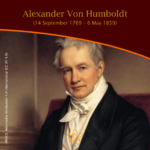 Dive into the extraordinary legacy of Alexander Von Humboldt, an intrepid explorer who defied boundaries to quench his insatiable thirst for knowledge. Embarking on a perilous five-year journey, Humboldt unveiled the Earth’s secrets, laying the foundation for modern conservationism. Discover his timeless impact on science and the spirit of exploration. |
 Voltaire - Freethinker and Freemason Discover the intriguing connection between the Enlightenment genius, Voltaire, and his association with Freemasonry in his final days. Unveil how his initiation into this secretive organization aligned with his lifelong pursuit of knowledge, civil liberties, and societal progress. Explore a captivating facet of Voltaire's remarkable legacy. |
 Robert Burns; But not as we know him A controversial subject but one that needs addressing. Robert Burns has not only been tarred with the presentism brush of being associated with slavery, but more scaldingly accused of being a rapist - a 'Weinstein sex pest' of his age. |
 Richard Parsons, 1st Earl of Rosse Discover the captivating story of Richard Parsons, 1st Earl of Rosse, the First Grand Master of Grand Lodge of Ireland, as we explore his rise to nobility, scandalous affiliations, and lasting legacy in 18th-century Irish history. Uncover the hidden secrets of this influential figure and delve into his intriguing associations and personal life. |
 James Gibbs St. Mary-Le-Strand Church Ricky Pound examines the mysterious carvings etched into the wall at St Mary-Le-Strand Church in the heart of London - are they just stonemasons' marks or a Freemason’s legacy? |
 Freemasonry and the Royal Family In the annals of British history, Freemasonry occupies a distinctive place. This centuries-old society, cloaked in symbolism and known for its masonic rituals, has intertwined with the British Royal Family in fascinating ways. The relationship between Freemasonry and the Royal Family is as complex as it is enduring, a melding of tradition, power, and mystery that continues to captivate the public imagination. |
 A Man Of High Ideals: Kenneth Wilson MA A biography of Kenneth Wilson, his life at Wellington College, and freemasonry in New Zealand by W. Bro Geoff Davies PGD and Rhys Davies |
 In 1786, intending to emigrate to Jamaica, Robert Burns wrote one of his finest poetical pieces – a poignant Farewell to Freemasonry that he wrote for his Brethren of St. James's Lodge, Tarbolton. |
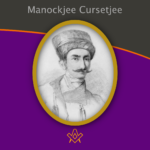 Alex Lishanin explores Mumbai and discovers the story of Lodge Rising Star of Western India and Manockjee Cursetjee – the first Indian to enter the Masonic Brotherhood of India. |
 Aleister Crowley - a very irregular Freemason Aleister Crowley, although made a Freemason in France, held a desire to be recognised as a 'regular' Freemason within the jurisdiction of UGLE – a goal that was never achieved. |
 Sir Joseph Banks – The botanical Freemason Banks was also the first Freemason to set foot in Australia, who was at the time, on a combined Royal Navy & Royal Society scientific expedition to the South Pacific Ocean on HMS Endeavour led by Captain James Cook. |
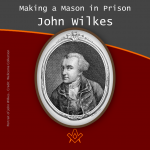 Making a Mason in Prison: the John Wilkes’ exception? |
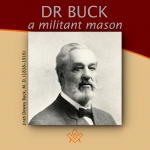 "To be a good man and true" is the first great lesson a man should learn, and over 40 years of being just that in example, Dr Buck won the right to lay down the precept. |
 Elias Ashmole: Masonic Hero or Scheming Chancer? The debate is on! Two eminent Masonic scholars go head to head: Yasha Beresiner proposes that Elias Ashmole was 'a Masonic hero', whereas Robert Lomas posits that Ashmole was a 'scheming chancer'. |
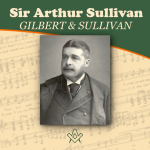 Sir Arthur Sullivan - A Masonic Composer We are all familiar with the comic operas of Gilbert and Sullivan, but did you know Sullivan was a Freemason, lets find out more…. |
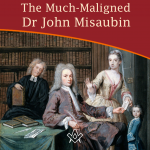 The Much-Maligned Dr John Misaubin The reputation of the Huguenot Freemason, has been buffeted by waves of criticism for the best part of three hundred years. |
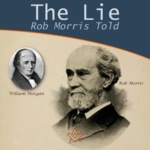 Was William Morgan really murdered by Masons in 1826? And what was the lie Masonic author Rob Morris told? Find out more in the intriguing story of 'The Morgan Affair'. |
 Lived Respected - Died Regretted Lived Respected - Died Regretted: a tribute to HRH The Prince Philip, Duke of Edinburgh |
 Who was Moses Jacob Ezekiel, a Freemason, American Civil War Soldier, renowned sculptor ? |
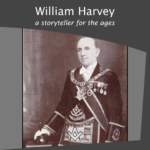 A Masonic author and Provincial Grand Master of Forfarshire in Scotland |
 Who was Philip, Duke of Wharton and was he Freemasonry’s Loose Cannon Ball ? |
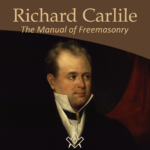 Richard Carlile - The Manual of Freemasonry Will the real author behind The Manual of Freemasonry please stand up! |
 Nicholas Hawksmoor – the ‘Devil’s Architect’ Nicholas Hawksmoor was one of the 18th century’s most prolific architects |
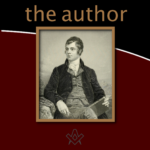 By Bro. Anthony Oneal Haye (1838-1877), Past Poet Laureate, Lodge Canongate Kilwinning No. 2, Edinburgh. |
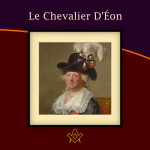 The Curious Case of the Chevalier d’Éon A cross-dressing author, diplomat, soldier and spy, the Le Chevalier D'Éon, a man who passed as a woman, became a legend in his own lifetime. |
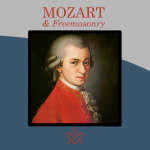 Mozart Freemasonry and The Magic Flute. Rev'd Dr Peter Mullen provides a historical view on the interesting topics |
masonic knowledge
to be a better citizen of the world
share the square with two brothers

click image to open email app on mobile device









